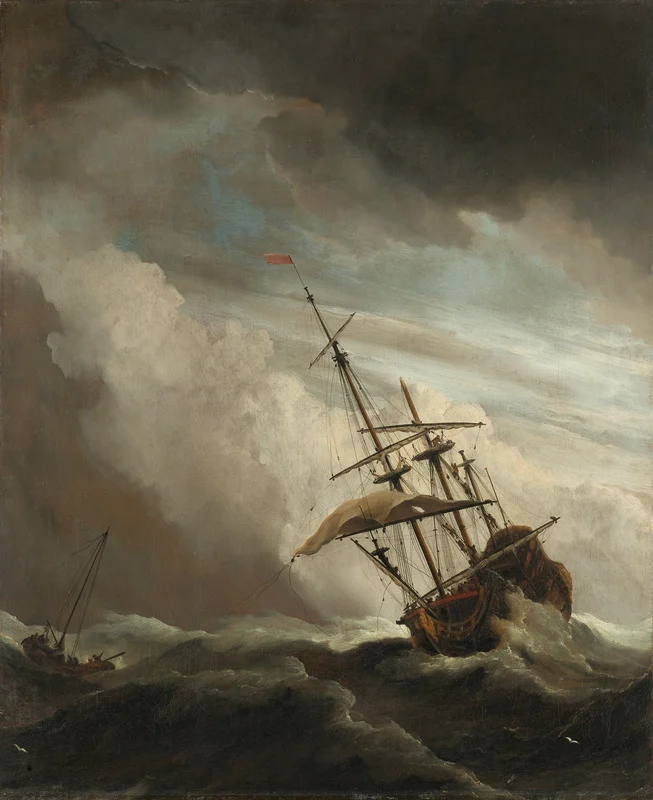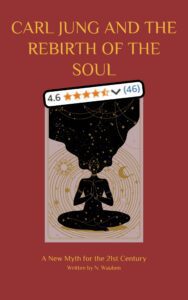Table of Contents
Introduction
Friedrich Nietzsche believed that, among the many Greek Gods, two were the most important, Apollo and Dionysus, both sons of Zeus. Apollo and Dionysus are complete opposites of eachother, however, according to Nietzsche, true greatness in art, but also in life, is achieved by uniting both opposites. In his first published book, The Birth of Tragedy, Friedrich Nietzsche called these two opposing forces Apollonian and Dionysian.
In this article I will discuss why Friedrich Nietzsche thought that these two gods and the forces which they represent are so important. Moreover, I will discuss the differences between these two concepts and why Nietzsche criticised Socrates so heavily in relation to these two concepts.
In a future article, I will discuss the implications of the Apollonian and Dionysian concepts for our present world, in particular the negative consequences following from a lack of the Dionysian element will be discussed. In this following article I will also elaborate on the influence which the idea of the Apollonian and Dionysian would have on Nietzsche’s later works, as well as how it influenced other thinkers. If you do not want to miss this second article on Apollo and Dionysus, please consider subscribing to my newsletter or YouTube channel, which can be done here: Newsletter & Youtube
“Let us turn our eyes […] to the highest sphere of the world that flows around us.” (Friedrich Nietzsche, the Birth of Tragedy, p.75)
The Birth of Tragedy and the Apollonian and Dionysian Spirit
Friedrich Nietzsche’s first book, The Birth of Tragedy, concerned itself to a significant degree with the rise and fall of Greek tragedy as a form of art. Friedrich Nietzsche explained why he believed Greek tragedy was so great, why he believed it eventually degraded, but also why he hoped humanity could one day produce something of similar splendour.
Although art plays and important role in the Birth of Tragedy, Friedrich Nietzsche indicated that his discussion on Greek tragedy and all the topics related to it, represented something much grander: the rise of Greek civilization and Greek art went hand in hand. At the same time, so did the decline of Greek civilization and Greek art.
In order to explain this connection, we must first address the two most important concepts of this article: Apollo/Apollonian and Dionysus/Dionysian. What is interesting to keep in mind for now, is that Friedrich Nietzsche blamed Socrates for the decline of Greek tragedy, and therefore also the decline of Greek civilization, which might come as a surprise after all we have learned about Socrates. However, as you may know as well, Friedrich Nietzsche was not afraid to demolish everything which we consider to be holy, not even Socrates.
Apollonian and Dionysian
Friedrich Nietzsche defined Apollo and Dionysus as the two gods of art. Although both are opposites of eachother, it is through these oppositions that they can create something which transcends them both: “These two very different tendencies walk side by side, usually in violent opposition to one another, inciting one another to ever more powerful births, perpetuating the struggle of the opposition only apparently bridged by the word ‘art’; until, finally, […] the two seem to be coupled.” (p.14)
In order to see how both tendencies, oppose eachother, but can eventually, through their opposition, result in ‘ever more powerful births’, we must first define the differences between both tendencies. In the table below you can see the differences between both tendencies which Friedrich Nietzsche defined throughout his book, the Birth of Tragedy.

Apollonian
As you can see in the table above, the Apollonian spirit represent the more temperate, prudent, and rational tendencies. Everything which opposes these tendencies is considered hostile to the Apollonian spirit, they are, however, incorporated in the Dionysian spirit.
As an extension of these ‘rationalistic’ tendencies, the Apollonian considers the individual, and the perseverance of the individual as the highest good. It is, through these rationalistic tendencies that the boundaries of the individual can best be persevered. If one were to loosen the rationalistic restrictions, the individual, as observed by Nietzsche, might become a part of the whole, which is directly opposed to the Apollonian spirit: “Apollo, as an ethical deity, demands moderation from his followers and, in order to maintain it, self-knowledge. And thus the admonitions ‘Know thyself’ and ‘Nothing to excess!’ coexist with the aesthetic necessity of beauty, while hubris and excess are considered to be truly hostile spirits of the non-Apolline realm.” (p.26)

Dionysian
The Dionysian spirit differs from the Apollonian in several ways. Friedrich Nietzsche observed that the Dionysian spirit, as opposed to the rationalistic Apollonian spirit, resides in a world characterized by myths and rituals: “The satyr, the Dionysiac chorist, lives in a world granted existence under the religious sanction of myth and ritual.” (p.38)
At the same time, Friedrich Nietzsche believed that when Greek citizens observed a Greek tragedy, wherein the Dionysiac spirit was presented, a sense of unity would be produced within the observer. As a result, the Dionysiac spirit is characterized by this unity which it produces: “The Greek man of culture felt himself annulled in the face of the satyr chorus, and the immediate effect of the Dionysiac tragedy is that state and society, the gulfs separating man from man, make way for an overwhelming sense of unity that goes back to the very heart of nature.” (p.39)
As a result, Friedrich Nietzsche claimed that the observer of a genuine Greek tragedy would be left with the confidence that life is filled with joy and that whatever happens at this moment, the wheels of time will continue to move forward regardless: “Whatever superficial changes may occur, life is at bottom indestructibly powerful and joyful […] living ineradicably behind all civilization, as it were, remaining the same for ever, regardless of the changing generations and the path of history.” (p.39) To those familiar with the works of Carl Jung, a connection between this idea of Nietzsche and Carl Jung’s concepts of the spirit of the times and the spirit of the depths can be observed.
Since the Dionysian spirit represents excess, the irrational, and a form of unity that can be dangerous to societies based on individualism, some ancient Greeks attempted to remove Dionysian elements from art and society as a whole. However, by doing so, Friedrich Nietzsche argued that these individuals had destroyed Greek tragedy. Moreover, this destruction was in vain, because the Dionysian spirit is too powerful: “Can the Dionysiac exist at all? Can it not be forcibly eradicated from Hellenic soil? Certainly, says the poet, if only such a thing were possible – but the god Dionysus is too powerful.” (p.60)

Socrates and the Apollonian and Dionysian
As mentioned in the introduction to this article, Nietzsche blamed Socrates to a large extend for the downfall of Greek tragedy. Nietzsche argued that Socrates, with his strong focus on knowledge and his emphasize of the rational, strongly opposed the Dionysiac spirit: “The chief law of which is, more or less: ‘to be beautiful everything must first be intelligible’ – a parallel to the Socratic dictum: ‘only the one who knows is virtuous.” (p.62) Friedrich Nietzsche did not see these characteristics as virtues, instead he saw them, if they were not balanced by their Dionysian counterpart, as dangerous and degenerative: “We may call Socrates the opponent of Dionysus, the new Orpheus who rose up against Dionysus and […] put the powerful god to flight.” (p.64)
Nietzsche observed that Socrates became the embodiment of the quest for knowledge, driven by science: “Socrates is the archetype of the theoretical optimist who, in his faith in the explicability of the nature of things, attributes the power of a panacea to knowledge and science, and sees error as the embodiment of evil.” (p.74)However, science, as Nietzsche indicated as well, has its limits: “But now, spurred on by its powerful illusion, science is rushing irresistibly to its limits, where the optimism essential to logic collapses.” (p.74)
This is the case because science, can only result in new science, and it can therefore never explain anything entirely or result in any form of final satisfaction: “If he sees here, to his dismay, how logic twists around itself and finally bites itself in the tail, there dawns a new form of knowledge, tragic knowledge, which needs art as both protection and remedy if we are to bear it.” (p.75)
As a means to compensate for this inherent deficit of science and reason we must once again call on the Dionysiac spirit:
“Let us turn our eyes […] to the highest sphere of the world that flows around us. We shall see the insatiable, optimistic zest for knowledge, exemplified in the figure of Socrates, transformed into tragic resignation and a need for art; while that same zest, at its lower levels, must express itself in terms hostile to art, and find Dionysiac tragedy profoundly repellent.” (p.75)
Conclusions
Friedrich Nietzsche believed that the Apollonian and Dionysian elements were of equal importance. True greatness in art and life could be achieved by uniting both opposites. The Apollonian spirit represents individualism, moderation, beauty, rationality, and order. The Dionysian spirit is characterized by unity, joy, horror, myths, and ritual (more on this in the following article), as well as chaos.
Friedrich Nietzsche, however, observed that opposition to the Dionysian element, represented by Socrates, was growing. According to Nietzsche this opposition to the spirit of Dionysus resulted in the downfall of Greek tragedy.
At the same time, however, Nietzsche believed that this opposition to the Dionysian spirit had other, far-reaching consequences: “Could not that very Socratism be a symptom of decline, fatigue, infection and the anarchical dissolution of the instincts?” (p.4) These implications will be the topic of a future article on the Apollonian and Dionysian spirit. It might be interesting for now to identify how both elements are represented in our modern world, in particular in modern art, literature, movies and television. Personally, I believe that the third season of David Lynch’s Twin Peaks is an interesting example of the Dionysian. Which elements of the Dionysian and Apollonian did you observe recently?


Great content! Super high-quality! Keep it up!